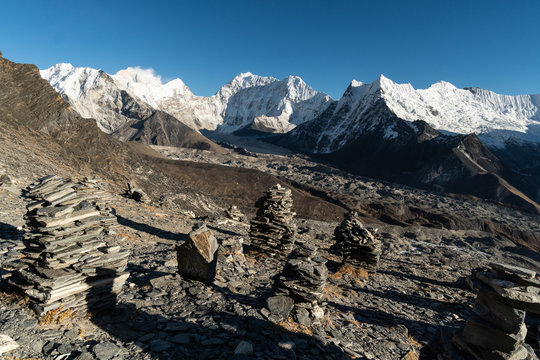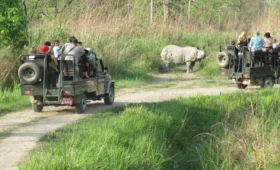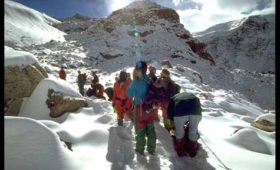Mera Peak, standing tall at 6,476 meters (21,247 feet), is a popular trekking peak in Nepal, offering a challenging yet achievable climb for experienced trekkers and aspiring mountaineers. Mera Peak Climbing is renowned for its stunning panoramic views of five 8,000-meter peaks – Everest, Lhotse, Makalu, Kangchenjunga, and Cho Oyu – making it a truly unforgettable Himalayan experience.
Why Choose Mera Peak Climbing?
- Panoramic Views: The summit of Mera Peak provides unparalleled views of some of the world’s highest mountains. It’s a photographer’s dream and a visual feast for any mountain enthusiast.
- Achievable Challenge: While requiring a good level of fitness and some mountaineering experience, Mera Peak is considered a technically straightforward climb compared to other high-altitude peaks. This makes it a great stepping stone for those aiming for higher summits in the future.
- Remote and Pristine Beauty: The trek to Mera Peak takes you through remote and less-trafficked areas of the Himalayas, allowing you to experience the pristine beauty of the region.
- Cultural Immersion: You’ll have the opportunity to interact with local Sherpa communities and experience their unique culture and traditions.
- Sense of Accomplishment: Reaching the summit of Mera Peak is a significant achievement, providing a profound sense of accomplishment and self-discovery.
Planning Your Mera Peak Climbing Expedition:
- Experience and Fitness: Prior mountaineering experience is recommended, including familiarity with ice axe and crampon use. A high level of physical fitness is essential. You should be comfortable with multi-day treks at high altitude.
- Permits and Regulations: Obtain the necessary climbing permits from the Nepal Mountaineering Association (NMA) and Sagarmatha National Park.
- Best Season: The best time to climb Mera Peak is during the pre-monsoon (March-May) and post-monsoon (September-November) seasons.
- Choosing a Climbing Operator: Select a reputable and experienced climbing operator who provides qualified guides, proper equipment, and logistical support. Thoroughly research and compare different operators before making a decision.
- Training and Preparation: Engage in rigorous physical training in the months leading up to your climb, focusing on cardiovascular fitness, strength training, and high-altitude acclimatization.
The Mera Peak Climbing Itinerary (Typical):
- Fly to Lukla: Begin your journey with a scenic flight from Kathmandu to Lukla, the gateway to the Everest region.
- Trek to Base Camp: Trek through picturesque Sherpa villages and stunning landscapes to reach Mera Peak Base Camp. This acclimatization process is crucial for a successful summit attempt.
- Acclimatization Climbs: Undertake acclimatization climbs to higher points on the mountain to prepare your body for the summit push.
- Summit Attempt: Make your summit attempt early in the morning to take advantage of stable weather conditions.
- Descend and Trek Out: Descend from the summit and trek back to Lukla for your flight back to Kathmandu.
Essential Gear for Mera Peak Climbing:
- Mountaineering Boots: Insulated and waterproof boots suitable for high-altitude climbing.
- Crampons and Ice Axe: Essential for navigating snowy and icy terrain.
- Harness, Helmet, and Belay Device: For safety during the climb.
- Warm Layers: Down jacket, fleece layers, and thermal underwear to protect against extreme cold.
- Waterproof and Windproof Outerwear: Jacket and pants to shield you from the elements.
- Gloves and Mittens: Warm gloves and mittens to protect your hands.
- Sunglasses and Sunscreen: Essential for protecting against the intense sun at high altitude.
- Sleeping Bag: A warm and comfortable sleeping bag rated for sub-zero temperatures.
Mera Peak Climbing is a challenging but incredibly rewarding adventure. With proper preparation, a good level of fitness, and a spirit of adventure, you can conquer this majestic peak and witness some of the most breathtaking views in the world.



